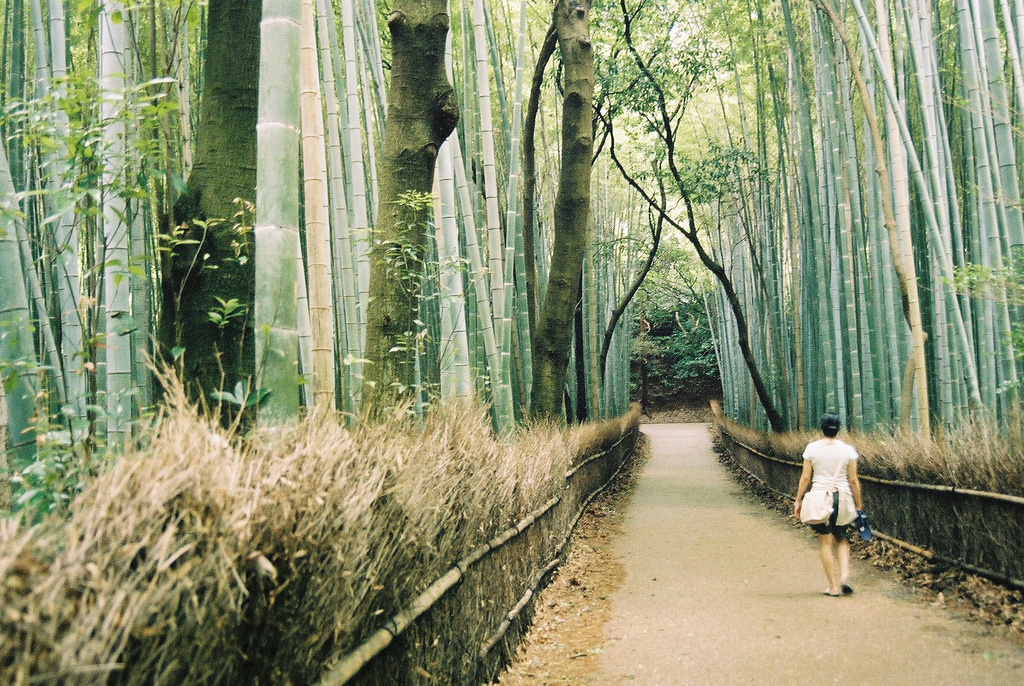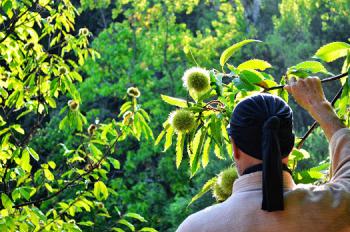
Ward off the post-holiday blues or any kind of stress with Shinrin-yoku, the art of forest walking. Photo: Courtesy Wikipedia
We are nearly a month into 2016 already and the holidays seem like a distant memory. Many people are now dealing with the fallout from the holidays. We ate way too much We spent way too much. We overindulged in so many ways I won’t make you feel any worse by listing them all here.
These things contribute to a mental hangover in January. Combine it with winter weather (yes, even in San Diego) and the negative effects of our poor planning and overspending sets in. Promising to practice moderation is fine for next year, but what can we do about all this stress now?
People in Japan practice a form of stress reduction that is very popular, and now scientific research is proving that it works. It’s called “Shinrin-yoku,” which translates to “forest bathing,” or walking in forests in order to promote health. Before you get the idea this is some sort of ancient practice, it’s only about 30 years old. It was first suggested as a way to reduce stress by the Forest Agency of Japan, similar to the U.S. Forest Service, in 1982. In just a short time it has become a recognized form of stress management and a major relaxation activity.
When scientists started studying Shinrin-yoku to find out how it works, they determined several positive things were going on when people walked in a forest environment:
- Blood sugar levels dropped, both after short and long distance walking
- Hormonal and nervous system functions improved
- Calorie burning increased
- Blood pressure and pulse rates dropped, and heart rate variability stabilized
- Psychological before and after testing showed a significant decrease in hostility and depression scores
- Stress levels were reduced. The higher the stress, the greater the effect.
Studies repeatedly show positive physiological and psychological benefits from forest walking. The worse the stress, the better the results. People in the studies and practitioners in Japan, Korea and other parts of the world report they feel “calm,” “comfortable,” and “refreshed.”
How exactly does Shinrin-yoku work? Scientists believe when participants walk in a forest or any dense plant landscape or garden, they breathe in volatile substances called phytoncides which are anti-microbial essential volatile organic compounds derived from plants. Phytoncides prevent plants from being eaten by animal and insects and prevent attacking organisms from taking hold that will rot the plants. Spices, onions, garlic, tea tree, oak, cedar, pine and citrus fruits give off these substances. These are all strong identifiable scents that most human beings enjoy under the right circumstances.
It doesn’t really take a scientific study to understand that it’s good for our health to get outside, breathe in the oxygen rich air produced by a forest while taking a brisk walk. We enjoy the natural aromatherapy, and we are free of the damaging blue light of our electronic devices assuming you don’t have your phone out! Shinrin-yoku calms all the damaging sympathetic nerve activity, the same way any form of meditation does.
Give Shinrin-yoku a try if you’re feeling the post-holiday blues, or any type of stress. You can learn more from the Association of Nature & Forest Therapy website. The group is based in the San Francisco Bay area and organizes Shinrin-yoku forest therapy walks in local areas so people can directly experience the practice and its benefits, and serves as a resource and advocacy group for preserving forested areas.
Cuyamaca State Park and the Cleveland National Forest are obvious choices, but you can find routes closer to home to try like Rose Canyon, Los Peñaquitos Canyon, and even the Palm Canyon in Balboa Park just west of the Organ Pavilion. You can even walk among the eucalyptus trees in sections of UCSD. Keep basic safety in mind and be sure you are realistic about your fitness level. Avoid walking after dark.
If you have a favorite walk, tell us in the Comments section or post a photo to our Facebook page.


